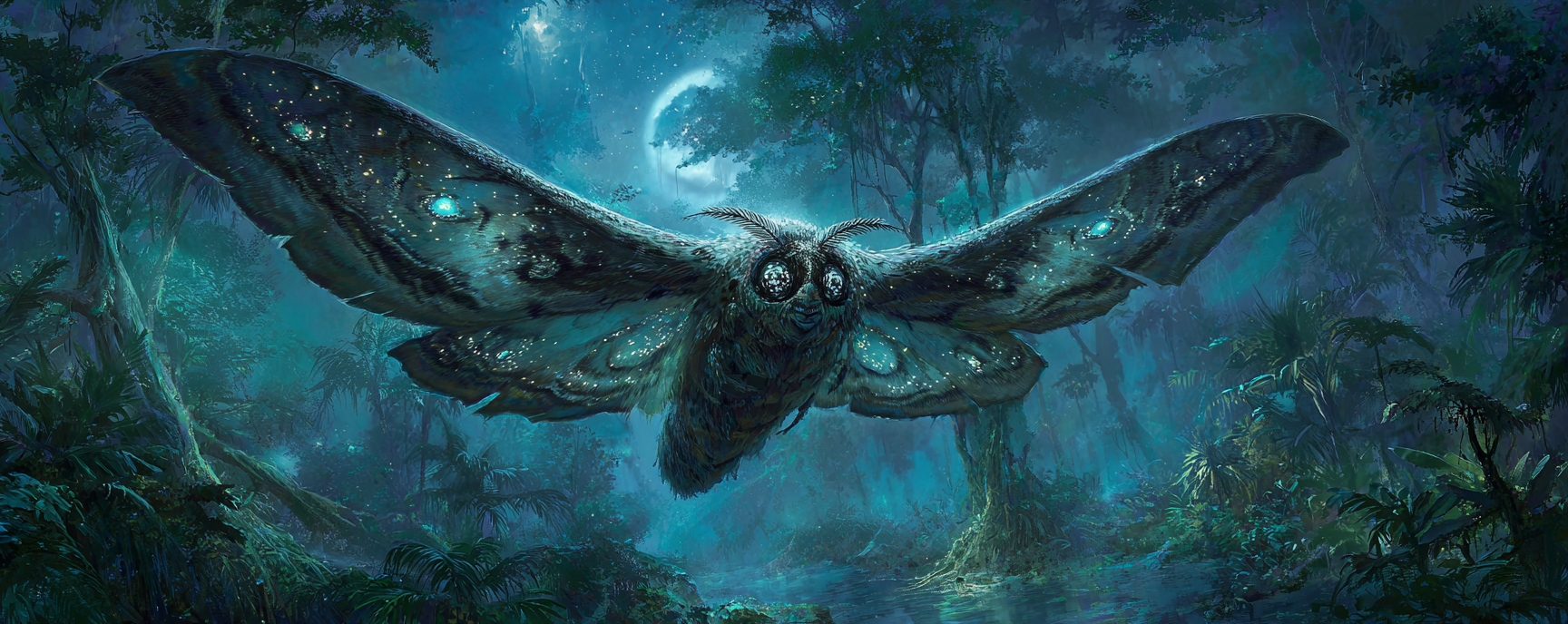Polilluma
Overview
Polilluma is one the mythical Elemental Guardians. Ancient, primal forces left behind after the Primordial Uprising. Embodying the ephemeral beauty of dusk, Polilluma is known as the Twilight Veil. She is the steward of dusk, the moment when day passes to night and the veil between the seen and the unseen thins.
Though never proven to exist, like all the Guardians, her image endures across cultures, most often depicted as a gigantic moth with wings that shimmer like the night sky itself. The endless void mixed with starlight.
Appearance
Like all the Guardians her form is that of a colossal beast, in her case her form is that of a moth. Her delicate wings sweep across the treetops without a single sound. Her eyes glow faintly with silver luminescence like small moons reflected in the sky and her wings are a tapestry of swirling darkness and beautiful light mimicking the night sky above her.
Cultural Significance
In folklore, particularly in Suriimese cultures, Polilluma is associated with guidance, the unknown and spiritual transitions - including death. Travellers whose journeys have extended unintentionally into the twilight hours, pray for her hoping for safe passage through them. Stories are told of lost children or wounded warriors who claim to have seen her wings gliding above them, or felt a sudden breeze and glow that led them out of peril.
These stories naturally can largely dismissed as hallucination, or misinterpretation of other phenomena. However, Polilluma is also widely believed to be the mother of the glowbinders, bioluminescent insects that form symbiotic relationships with the jungle beasts by feeding on parasites in exchange for their light. These small creatures, said to carry fragments of her power, are thought to have been spun from the stardust in her wings and gifted to the jungles. Glowbinders often accompany depictions of Polilluma in ceremonial art and are seen as a sign of her blessing.
Some cultures refer to her as 'The Shepherd', not just because she gathers wayward folk back to safety, but also in the sense of shepherding the souls of the dead to the afterlife to meet Zarene, the goddess of death - or their culture's counterpart . Cultures that worship the Guardians do form a distinction between the Guardians and the Gods, even the Quitapha Dynasty, who depict the Gods with animal-like features. There the gods are still humanoid, whilst the Guardians are entirely bestial.
Her symbol, in cultures that follow the Guardians, is a twin-wing silhouette. However, instead of the blended wings she is depicted with in artworks, the simple symbols utilise one dark wing and one light wings (for instance in carvings, one wing is entirely carved out, the other just the outline).



I really loved this article! It is well written and easy to follow. I will be reading more about this world! Thank you for sharing.
Thank you for the praise, and now I can fix the awkward Shepard/Shepherd typo - guess I had Mass Effect on the brain for some reason when I wrote this...